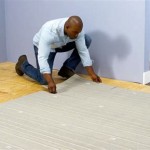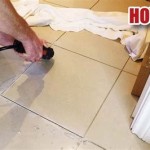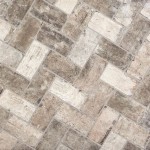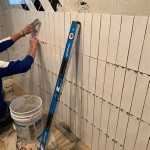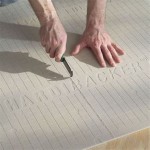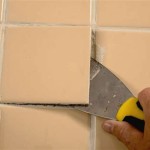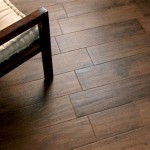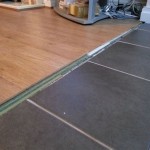Can You Put Plywood Over Ceramic Tile? A Comprehensive Guide
The question of whether to install plywood over ceramic tile frequently arises during renovation projects. Homeowners and contractors often contemplate this approach as a potential time-saving and cost-effective solution for preparing a subfloor for new flooring. However, the viability of installing plywood directly over ceramic tile depends on various factors, including the condition of the existing tile, the type of new flooring being installed, and the overall structural integrity of the subfloor assembly. This article provides a detailed exploration of the considerations, challenges, and best practices associated with this installation method.
The primary appeal of installing plywood over ceramic tile lies in avoiding the labor-intensive and messy process of tile removal. Removing ceramic tile can be time-consuming and requires specialized tools and safety equipment. Furthermore, the removal process often generates significant dust and debris, requiring extensive cleanup. By circumventing tile removal, project timelines can be shortened and overall costs potentially reduced. However, opting for this shortcut requires careful assessment to ensure a successful and long-lasting flooring installation.
Before proceeding with installing plywood over ceramic tile, a thorough inspection of the existing tile is crucial. Any loose, cracked, or damaged tiles must be addressed prior to the installation. Failing to do so can compromise the stability of the new subfloor and ultimately lead to flooring failures. Loose tiles can create voids beneath the plywood, resulting in unevenness and potential movement. Cracked tiles may propagate further damage under the added weight of the plywood and new flooring. The presence of moisture issues also needs to be investigated and resolved, as moisture can exacerbate existing problems and lead to mold growth.
Assessing the Existing Tile and Substrate
The initial step involves a comprehensive visual inspection. Each tile should be examined for cracks, chips, and signs of detachment from the underlying substrate. A simple tap test can help identify loose tiles; a hollow sound indicates a lack of adhesion. If a significant number of tiles are loose or damaged, removing the entire tile layer and starting with a clean subfloor is generally the recommended approach. Patching individual tiles may be feasible for minor repairs, but a widespread issue necessitates a more thorough solution.
Beyond the surface condition of the tiles, it’s essential to evaluate the underlying substrate. The substrate must be structurally sound and capable of supporting the added weight of the plywood and new flooring. If the substrate is compromised due to water damage, rot, or other structural issues, it must be repaired or replaced before proceeding. Ignoring underlying structural problems will inevitably lead to problems with the new flooring installation.
Moisture testing is another critical aspect of the assessment. Excessive moisture can lead to mold growth, warping of the plywood, and adhesive failure. Moisture meters can be used to measure the moisture content of the tile, grout, and substrate. If moisture levels are elevated, the source of the moisture must be identified and remedied before installing plywood. This may involve repairing leaks, improving ventilation, or implementing moisture barriers.
Preparing the Tile Surface for Plywood Installation
Once the existing tile has been thoroughly assessed and any necessary repairs have been made, the surface needs to be properly prepared to ensure adequate adhesion of the plywood underlayment. This preparation typically involves cleaning, leveling, and creating a suitable bonding surface.
Cleaning the tile surface is essential to remove any dirt, grease, wax, or other contaminants that could interfere with adhesion. A degreasing cleaner specifically designed for tile and grout should be used to thoroughly clean the surface. Rinse the surface thoroughly with clean water and allow it to dry completely before proceeding to the next step. A clean surface promotes a stronger bond between the tile and the adhesive used to secure the plywood.
Leveling the tile surface is often necessary to create a smooth and even base for the plywood. Uneven tiles, grout lines, or minor surface imperfections can create inconsistencies in the subfloor. Self-leveling compound can be used to fill in low spots and create a level surface. The self-leveling compound should be applied according to the manufacturer's instructions, ensuring proper mixing and curing times. For larger variations in height, multiple applications of self-leveling compound may be required.
Creating a suitable bonding surface involves roughening the tile surface to provide a mechanical key for the adhesive. This can be achieved by sanding the tile surface with coarse-grit sandpaper or using a grinder with a diamond grinding pad. The goal is to create a slightly textured surface that will allow the adhesive to grip the tile effectively. After sanding or grinding, thoroughly remove any dust or debris before applying the adhesive.
Selecting and Installing the Plywood Underlayment
Choosing the appropriate plywood and employing proper installation techniques are crucial for achieving a stable and durable subfloor. The type of plywood, its thickness, and the method of attachment all play a significant role in the overall success of the installation.
The recommended type of plywood for underlayment is exterior-grade plywood or marine-grade plywood. These types of plywood are designed to withstand moisture and resist delamination. Avoid using interior-grade plywood, as it is not suitable for environments where moisture may be present. The thickness of the plywood should be determined based on the span between the floor joists and the intended use of the floor. Thicker plywood provides greater stiffness and load-bearing capacity. Consult local building codes and manufacturer recommendations for specific plywood thickness requirements.
The plywood should be installed with a combination of construction adhesive and fasteners. Apply a generous bead of construction adhesive to the prepared tile surface, ensuring full coverage. Position the plywood sheets over the adhesive and secure them with screws or nails. The fasteners should be long enough to penetrate the plywood and the tile, reaching into the underlying substrate. Follow a consistent fastening pattern, spacing the fasteners according to building code requirements. Stagger the joints between plywood sheets to prevent continuous seams, which can create weak points in the subfloor.
Leave a small expansion gap between the plywood sheets and the walls to allow for expansion and contraction due to changes in temperature and humidity. This gap prevents the plywood from buckling or warping. Fill the expansion gap with a flexible sealant after the plywood is installed. The entire plywood surface should be smooth and level, with no protruding fasteners or uneven seams. Sand down any imperfections before installing the final flooring.
In summary, placing plywood over ceramic tile is feasible under specific conditions. These conditions include a sound existing tile installation, careful surface preparation, and the proper selection and installation of the plywood underlayment. Failure to address any of these areas can result in flooring problems, so ensure each factor is assessed and planned accordingly. Remember to consult local building codes and manufacturer recommendations for specific guidance on subfloor installation.

Blog Expert Advice How To Tile Onto Wood Plywood Or Chipboard

Blog Expert Advice How To Tile Onto Wood Plywood Or Chipboard

How To Prepare A Subfloor For Tile Installation The Home Depot

How To Lay Tile Over Plywood

Tile Underlayment The Complete Guide For Beginners Diytileguy

Tile Subfloor Deflection Thickness Common Substrates

How To Prepare Subfloor For Tile The Home Depot

Prep A Subfloor For Tile Fine Homebuilding

How To Install Tile Backer Board On A Wood Subfloor Diy

How To Lay Ceramic Tile Over Plywood Ron Hazelton
Related Posts

